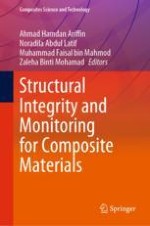The book focuses on the recent technology and advancement in structural integrity and monitoring systems in composite materials. Composites have been widely used in automotive, aerospace and wind turbine industries, therefore it is important to develop state of the art technology to monitor and manage the damage tolerance and durability. This book explores the challenge of a monitoring system in a composite and presents a real-time system which has advantages for damage detection, localization, assessment and life prediction compared to the Non-Destructive Testing (NDT). It will also present the modelling and prediction of failure in a composite material based on computational analysis of the characteristics and properties of the composite material based on fiber and matrix properties. This book will benefit lecturers, students, researchers, engineers and industrialist who are working in the civil, mechanical engineering, automotive, aerospace and wind turbine industries.
